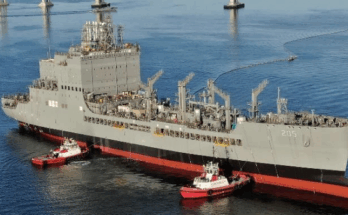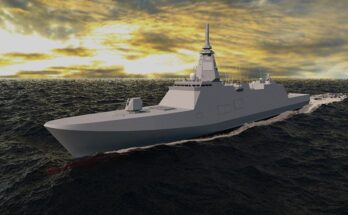by Carter Palmer, Power Systems Specialist, Forecast International.
The Arleigh Burke class destroyer has three “flights” (variants), the latest being the third and most advanced. Advanced is a key word here, because the more advanced a ship is, the more electricity it needs in order to power next-generation sensors and weapons. The question on the minds of those in the know has been, what will power these new ships?
Enter General Electric and Rolls-Royce.
One option for these new ships was to go with a gas turbine from across the pond. Rolls-Royce has long powered ships worldwide with its gas turbines; the current MT5, MT7 and MT30 attest to that. The MT30 would have most closely fit the demands of the Arleigh Burke class with about 40 MW of power. Rolls-Royce therefore had good reason to be optimistic, as its MT30 is already installed on the Zumwalt class destroyer and the LCS-1 Littoral Combat Frigate. Unfortunately for Rolls-Royce, General Electric had some advantages as well.
A dependable and proven machine, the GE LM2500 has long powered the Arleigh Burke class. GE has provided more than 300 LM2500s to the U.S. Navy for the type. Newer variants can produce about 35 MW, not as much as the MT30 but still significant in terms of electricity production. It is likely, therefore, that the Navy went with the LM2500 for the sake of continuity and dependability. The LM2500 was not the only option, though.
A marine variant of GE’s LM6000 might have also fulfilled the Navy’s requirements. With over 40 MW of power, this turbine would have been sufficient to the task.
To some, the choice of the LM2500 was not a surprise, and it is difficult to ascertain how close the competition was. About 20 Flight III Arleigh Burke class ships are planned and, at four LM2500s per ship, General Electric has added to its backlog.
Be sure to visit Forecast International power systems analysts Carter Palmer and Stu Slade at Power-Gen International on December 4th through 6th, Booth 1360
As an analyst for Forecast International’s Industrial & Marine Turbine Forecast, author Carter Palmer specializes in examining key gas turbine programs for electrical power generation, mechanical drive, and marine propulsion applications.
For 50 years, Forecast International intelligence reports have been the aerospace and defense industry standard for accurate research, analysis, and projections. Our experienced analysts compile, evaluate, and present accurate data for decision makers. FI's market research reports offer concise analysis of individual programs and identify market opportunities. Each report includes a program overview, detailed statistics, recent developments and a competitive analysis, culminating in production forecasts spanning 10 or 15 years. Let our market intelligence reports be a key part of reducing uncertainties and mastering your specific market and its growth potential. Find out more at www.forecastinternational.com



